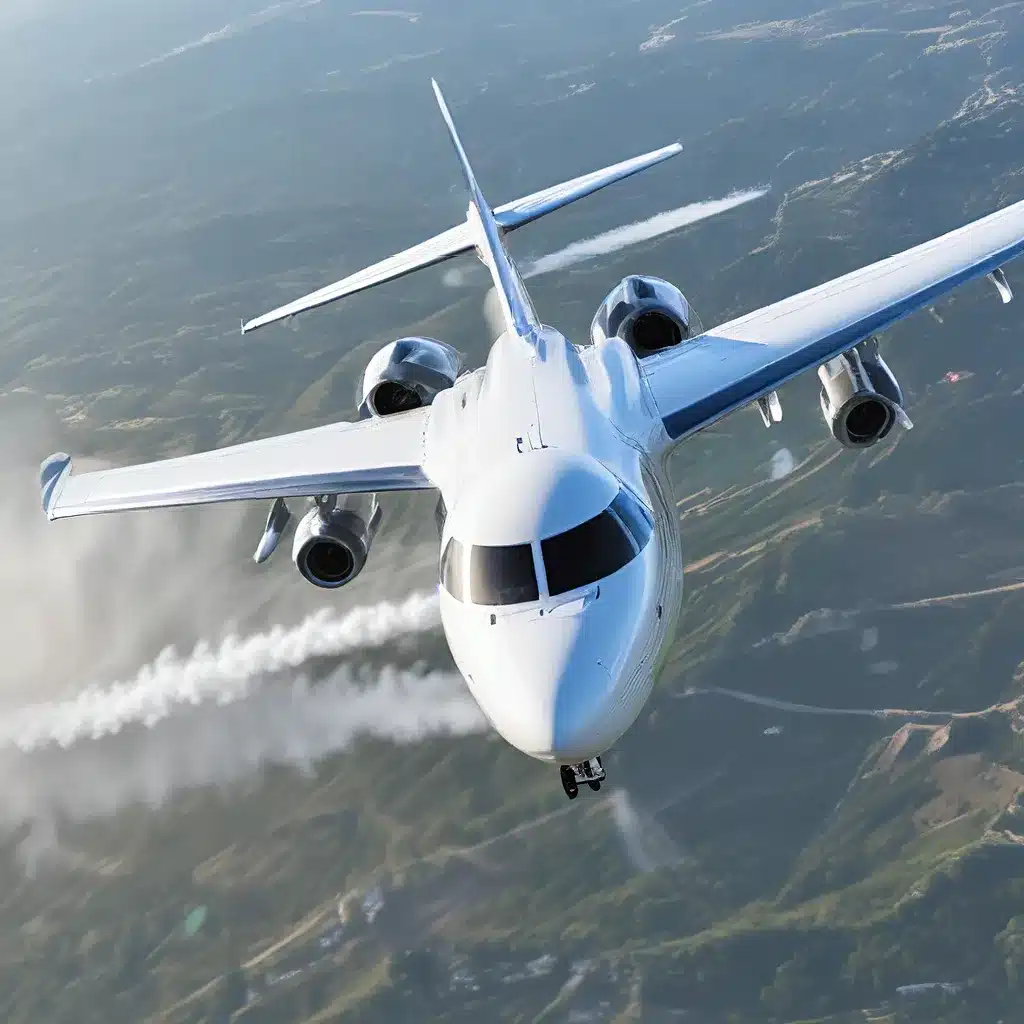
The Aviation Sector’s Sustainability Challenge
As the world races to meet ambitious net-zero carbon emission targets by 2050, the aviation industry finds itself at a crucial crossroads. With air travel responsible for a significant portion of global greenhouse gas (GHG) emissions, the need for a sustainable solution has never been more pressing. Enter the promising realm of renewable jet fuels, also known as sustainable aviation fuels (SAFs). These innovative alternatives to traditional fossil-based jet fuel hold the key to transforming the aviation industry into a more eco-friendly and carbon-conscious sector.
But the path to widespread SAF adoption is not without its challenges. The current methods and feedstocks used to produce these fuels are struggling to keep up with the ever-growing demand for air travel. In fact, less than 1% of the total jet fuel demand is currently met by SAFs. Clearly, there is a significant gap that needs to be bridged if the aviation industry is to truly achieve its sustainability goals.
Exploring the SAF Landscape
To understand the potential of renewable jet fuels, let’s delve into the state-of-the-art technologies currently in use for SAF production:
-
Hydroprocessed Esters and Fatty Acids (HEFA): This process converts vegetable oils, animal fats, and waste oils into drop-in jet fuel through hydrotreatment and isomerization.
-
Fischer-Tropsch (FT): This method converts biomass, coal, or natural gas into a synthetic crude oil, which is then refined into jet fuel.
-
Alcohol-to-Jet (ATJ): This technology uses fermented sugars from various biomass sources to produce alcohol, which is then converted into jet fuel.
-
Catalytic Hydrothermolysis (CH): This process utilizes vegetable oils and animal fats to produce a bio-crude that can be further refined into jet fuel.
-
Hydroprocessing of Fermented Sugars (HFS): This method converts fermented sugars from biomass into jet fuel through hydrotreatment and hydrocracking.
While these technologies have made significant strides, they are still unable to meet even a small percentage of the global jet fuel demand. This underscores the need for further innovation and the exploration of alternative feedstocks and production methods.
Unlocking the Potential of Hydrothermal Liquefaction
Amidst the search for more sustainable and scalable SAF solutions, one promising technology has emerged: hydrothermal liquefaction (HTL). This innovative process offers a fresh perspective on the production of renewable jet fuels.
Unlike the energy-intensive drying stage required in traditional biomass conversion methods, HTL has the unique advantage of being able to process wet waste streams, such as sewage sludge (SS), food waste (FW), and animal manure. These feedstocks are not only continuously available but also have a net positive cost, making them an attractive option for SAF production.
The HTL process converts these wet waste materials into a high-quality bio-crude that can be further refined into jet fuel through a process known as hydrotreating. This approach not only reduces waste and emissions but also offers a more cost-effective and environmentally friendly alternative to the conventional disposal methods of incineration or landfilling.
While HTL for SAF production is not yet commercialized, there is growing excitement and optimism around its potential. Researchers are actively exploring ways to overcome the technical challenges and scale up the technology to make it a viable option for large-scale SAF production.
Feedstock Diversity: A Key to Sustainable Aviation
One of the significant advantages of the HTL process is its ability to utilize a diverse range of feedstocks, including those that are often overlooked or considered waste. This diversity not only enhances the sustainability of the SAF production process but also addresses the limitations of traditional feedstocks.
Sewage sludge, for instance, is a continuously available and abundant resource that is often simply incinerated or landfilled, contributing to environmental pollution. By converting this waste into bio-crude through HTL, we can transform a liability into an asset, creating a more circular and eco-friendly supply chain for the aviation industry.
Similarly, food waste and animal manure represent untapped resources that can be leveraged for SAF production. These feedstocks are readily available, locally sourced, and can be processed using the HTL technology to produce high-quality bio-crude.
Overcoming Challenges and Embracing the Future
While the potential of renewable jet fuels is undeniable, the path to widespread adoption is not without its challenges. Technological barriers, logistical hurdles, and economic considerations must all be addressed to ensure the long-term viability and scalability of SAF production.
One of the key challenges facing the industry is the need for further research and development to optimize the various SAF production technologies, including HTL. Researchers are actively working to improve efficiency, reduce costs, and enhance the overall sustainability of these processes.
Additionally, the seamless integration of SAF supply chains with existing aviation infrastructure is crucial. This will require collaborative efforts between industry players, policymakers, and regulatory bodies to establish the necessary infrastructure and overcome any logistical obstacles.
As we look to the future, the continued evolution and advancements in renewable jet fuel technologies, coupled with supportive policies and incentives, will be essential in driving the widespread adoption of sustainable aviation. By embracing innovative solutions like HTL and diversifying our feedstock options, we can steer the aviation industry towards a more sustainable and eco-friendly future.
Empowering Sustainable Aviation with Firewinder
At Firewinder, we are committed to leading the charge towards a more sustainable aviation industry. Our team of experts is dedicated to researching, developing, and implementing cutting-edge renewable jet fuel technologies, including the promising hydrothermal liquefaction (HTL) process.
We understand the critical role that renewable jet fuels will play in achieving net-zero carbon emissions in the aviation sector. That’s why we’re actively collaborating with industry partners, researchers, and policymakers to overcome the challenges and unlock the full potential of sustainable aviation.
Whether you’re an aviation enthusiast, an industry professional, or simply someone passionate about environmental sustainability, we invite you to join us on this transformative journey. Together, we can redefine the future of air travel and create a cleaner, greener world for generations to come.

